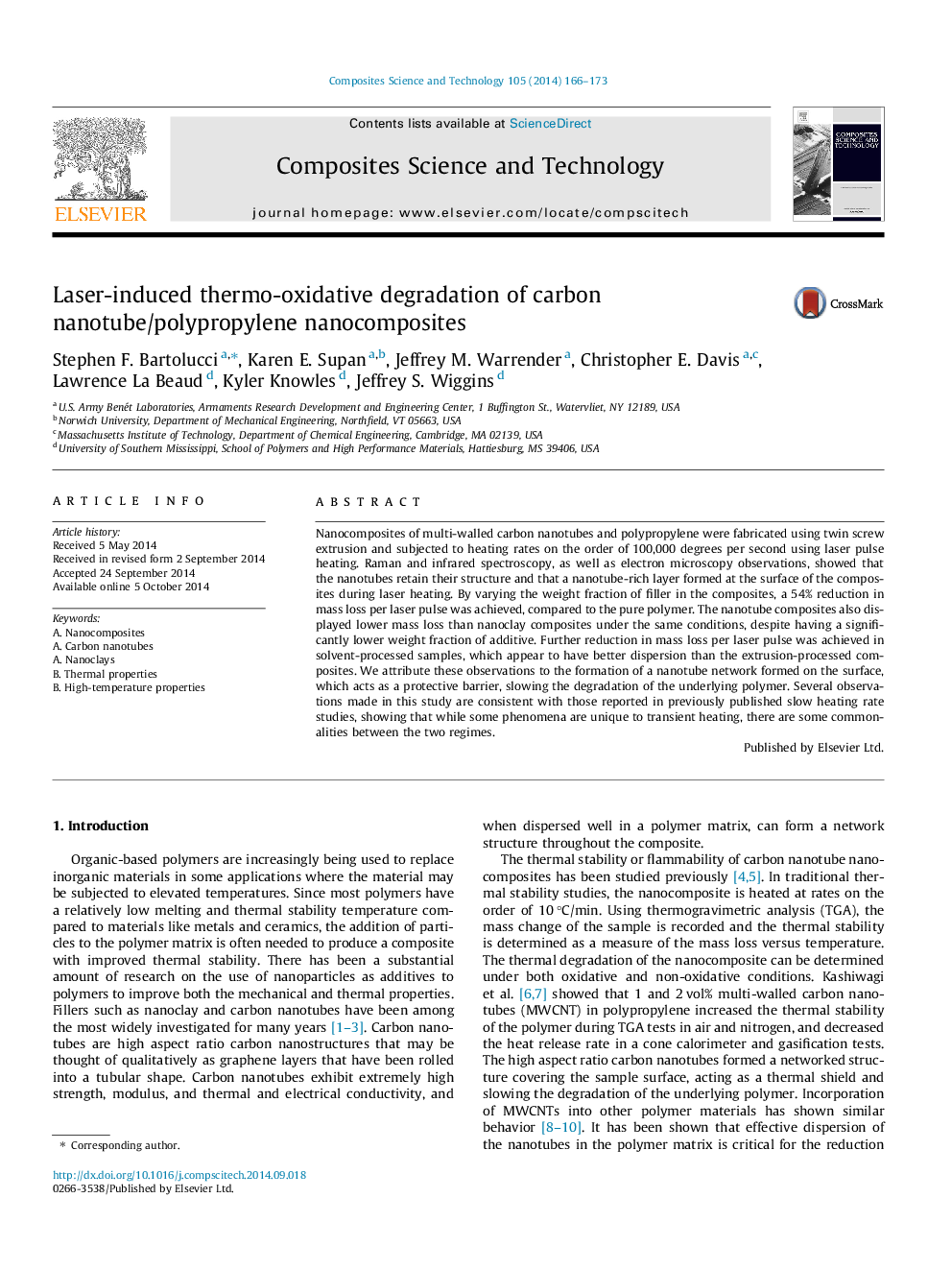| Article ID | Journal | Published Year | Pages | File Type |
|---|---|---|---|---|
| 7215669 | Composites Science and Technology | 2014 | 8 Pages |
Abstract
Nanocomposites of multi-walled carbon nanotubes and polypropylene were fabricated using twin screw extrusion and subjected to heating rates on the order of 100,000 degrees per second using laser pulse heating. Raman and infrared spectroscopy, as well as electron microscopy observations, showed that the nanotubes retain their structure and that a nanotube-rich layer formed at the surface of the composites during laser heating. By varying the weight fraction of filler in the composites, a 54% reduction in mass loss per laser pulse was achieved, compared to the pure polymer. The nanotube composites also displayed lower mass loss than nanoclay composites under the same conditions, despite having a significantly lower weight fraction of additive. Further reduction in mass loss per laser pulse was achieved in solvent-processed samples, which appear to have better dispersion than the extrusion-processed composites. We attribute these observations to the formation of a nanotube network formed on the surface, which acts as a protective barrier, slowing the degradation of the underlying polymer. Several observations made in this study are consistent with those reported in previously published slow heating rate studies, showing that while some phenomena are unique to transient heating, there are some commonalities between the two regimes.
Keywords
Related Topics
Physical Sciences and Engineering
Engineering
Engineering (General)
Authors
Stephen F. Bartolucci, Karen E. Supan, Jeffrey M. Warrender, Christopher E. Davis, Lawrence La Beaud, Kyler Knowles, Jeffrey S. Wiggins,
